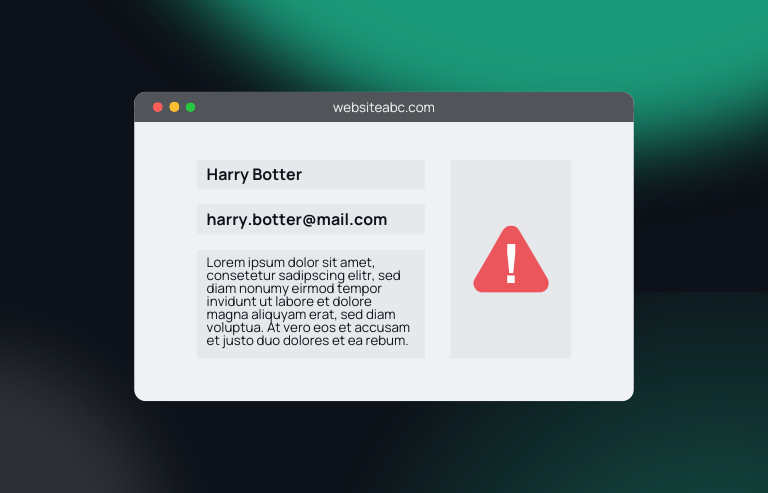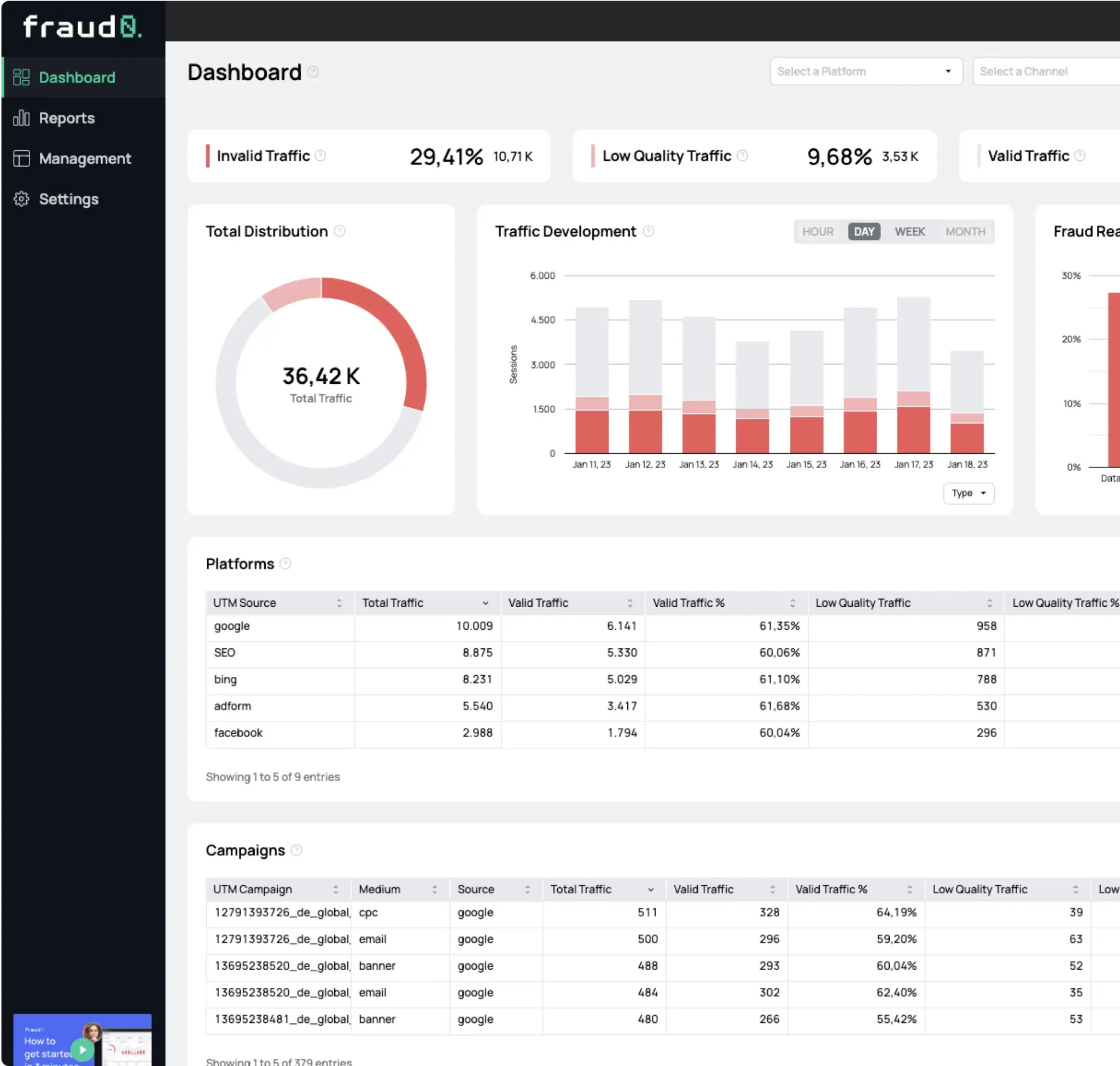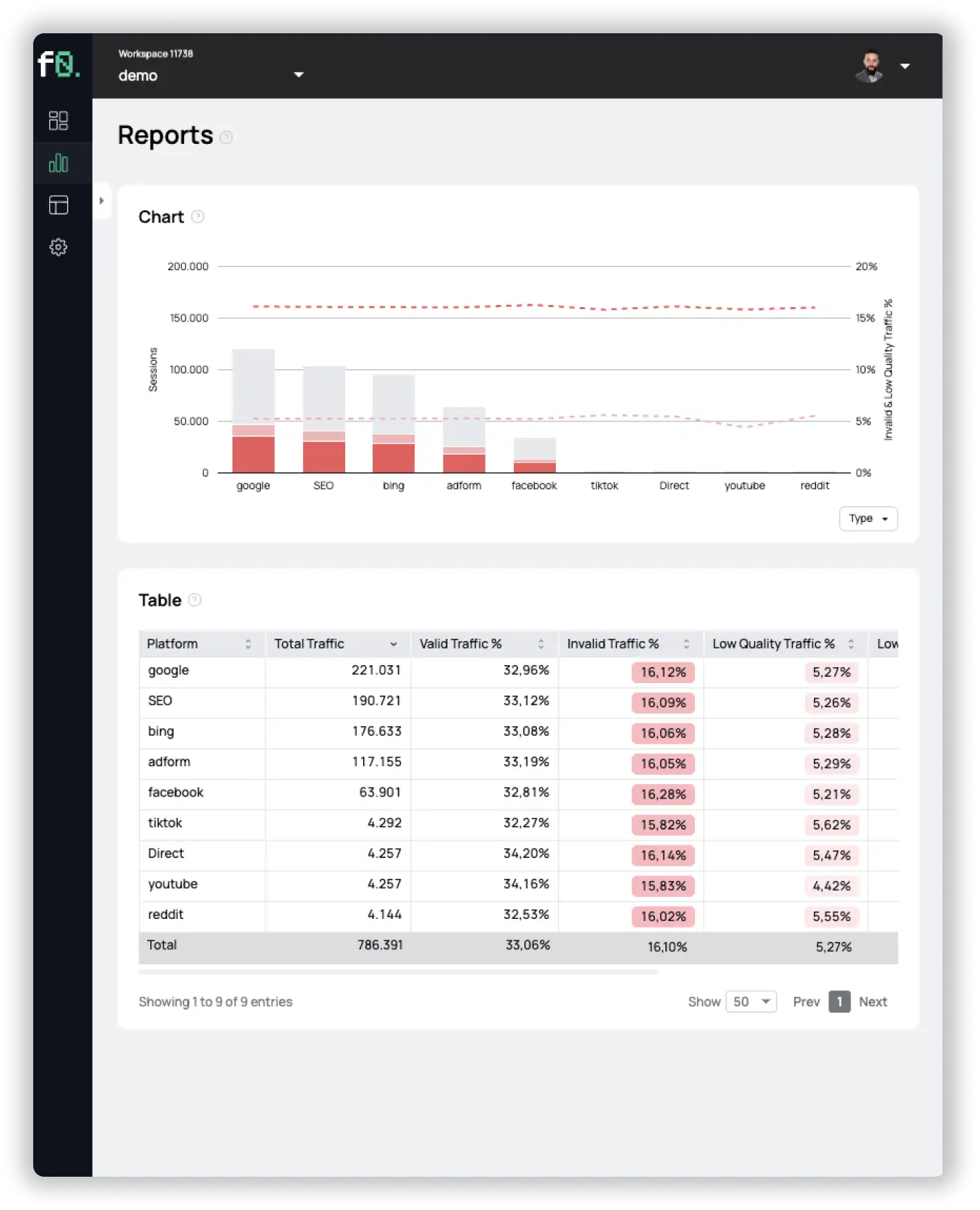- Blog
Fake Form Fills: The Hidden Cost of Fake Leads in Digital Marketing

Cybersecurity Content Specialist

Every marketer loves to see their lead dashboard light up with new form fills. On the surface, a high volume of sign-ups looks like success: campaigns are working, prospects are interested, and the sales pipeline is growing. But what happens when many of those leads turn out to be fake?
Fake form fills, also known as fake leads, are one of the fastest-growing threats in digital marketing. Global reports estimate that advertisers lose tens of billions of dollars every year to ad fraud, with lead generation fraud playing a major role. Unlike click fraud, which is often detected at the traffic level, fake form fills slip deeper into the funnel where they waste budget, pollute CRMs, and drain sales resources.
This article explains what fake leads are, why they are so damaging, and how to detect them before they damage your marketing ROI.
What Are Fake Leads?
Fake leads are fraudulent or invalid submissions in online forms that appear to be genuine prospects but have no real intention of becoming customers. They can be generated in multiple ways, each with its own level of sophistication:
- Bot-Generated Submissions: Automated scripts fill out forms at scale, often using randomized but syntactically correct data. Modern bots can mimic human typing patterns to bypass basic defenses.
- Click Farm Submissions: Human workers are paid to manually complete forms, making detection harder since their behavior looks authentic. Read more about click farms.
- Synthetic Identities: Fraudsters combine fragments of real and fake data, for example a valid phone number with a fabricated email address, to bypass superficial validation checks.
- Affiliate Lead Fraud: Some third-party traffic sources or affiliates inflate their performance metrics by generating fake leads that qualify for commission. Read more about affiliate marketing fraud.
- Competitor Sabotage: In some cases, fake leads are submitted deliberately to overwhelm sales teams and distort campaign results.
In short: fake leads are not just “spam.” They are a systemic problem created by financial incentives, cheap fraud tools, and the complexity of modern advertising ecosystems.

Why Fake Leads Hurt More Than You Think
Marketers often underestimate the full impact of fake form fills. The damage goes far beyond wasted clicks or ad spend:
- Wasted Budget
Every fake lead has a direct cost. In pay-per-lead models, businesses literally pay for non-existent prospects. Even in CPC or CPM campaigns, fake form fills inflate conversion numbers, misleading marketers into thinking campaigns are performing better than they are. We recommend also reading our article “Smarter Ad Spending Boosts Performance in a World Full of Fraud“. - Sales Productivity Loss
When 10–20% of inbound leads turn out to be fake, sales reps lose hours each week chasing unreachable phone numbers and bouncing emails. That translates into fewer conversations with real prospects and slower revenue growth. - CRM Pollution
CRMs and marketing automation platforms are built on data quality. Fake entries corrupt databases, inflate contact lists, and lower deliverability rates when invalid addresses cause email bounces. Over time, this reduces sender reputation and makes it harder for legitimate campaigns to reach inboxes. - Distorted Analytics
Fake leads distort performance metrics. If form fills are counted as conversions, cost-per-lead appears lower than it truly is, and attribution models reward the wrong campaigns or traffic sources. Budgets are then reallocated based on false data, amplifying the waste. - Compliance & Brand Risk
In industries where personal data is regulated, storing fraudulent or synthetic identities can create compliance headaches. At the same time, repeatedly contacting invalid or recycled leads damages brand trust with real customers.
The bottom line: fake form fills are not a harmless annoyance. They directly erode ROI, misguide strategy, and reduce the effectiveness of every euro spent on marketing.
How to Detect Fake Leads
Detecting fake leads requires both simple checks anyone can apply and advanced methods that go deeper into user behavior.
Quick Red Flags
- Obvious Fake Names: Submissions like “Test Test” or “Mickey Mouse.”
- Disposable or Temporary Emails: Domains like Mailinator or other one-time inbox services.
- Duplicate Data: The same phone number or email appearing across multiple leads.
- Suspicious IP Patterns: Multiple form fills from the same IP within seconds.
These checks can help teams identify the most blatant cases. But today’s fraudsters are sophisticated, and manual review is not enough.
Advanced Detection Methods
- Behavioral Biometrics: Measuring typing speed, mouse movement, and scrolling to distinguish humans from bots.
- Device Fingerprinting: Identifying unique browser and device combinations, even when fraudsters rotate IP addresses or use VPNs.
- Velocity Anomalies: Spotting unnatural bursts of sign-ups, such as dozens of form fills within seconds.
- Source Analysis: Comparing lead-to-sale ratios by traffic source. Fraudulent affiliates often show high lead volumes but near-zero conversions.
- Cross-Database Deduplication: Detecting recycled leads that reappear across campaigns or vendors.
By combining quick checks with advanced analytics, marketers can move beyond guesswork and build a systematic defense against invalid traffic and fake leads.
Fake form fills may not generate headlines like click fraud, but they represent an equally dangerous, often more expensive, form of marketing fraud. They waste budget, drain sales productivity, pollute CRMs, and misguide strategic decision-making.
The key is awareness: marketers must treat fake leads as a serious business risk, not just a technical nuisance. By understanding the different types of lead generation fraud, recognizing their hidden costs, and applying robust detection methods, businesses can protect their budgets and keep their growth data clean.
In a digital landscape where performance marketing is under constant scrutiny, valid leads are the foundation of real growth. Marketers who invest in detecting and eliminating fake form fills will not only save money, but will build the reliable pipeline their businesses need to thrive.

See what’s hidden: from the quality of website traffic to the reality of ad placements. Insights drawn from billions of data points across our customer base in 2024.
- Published: August 27, 2025
- Updated: August 27, 2025
1%, 4%, 36%?




